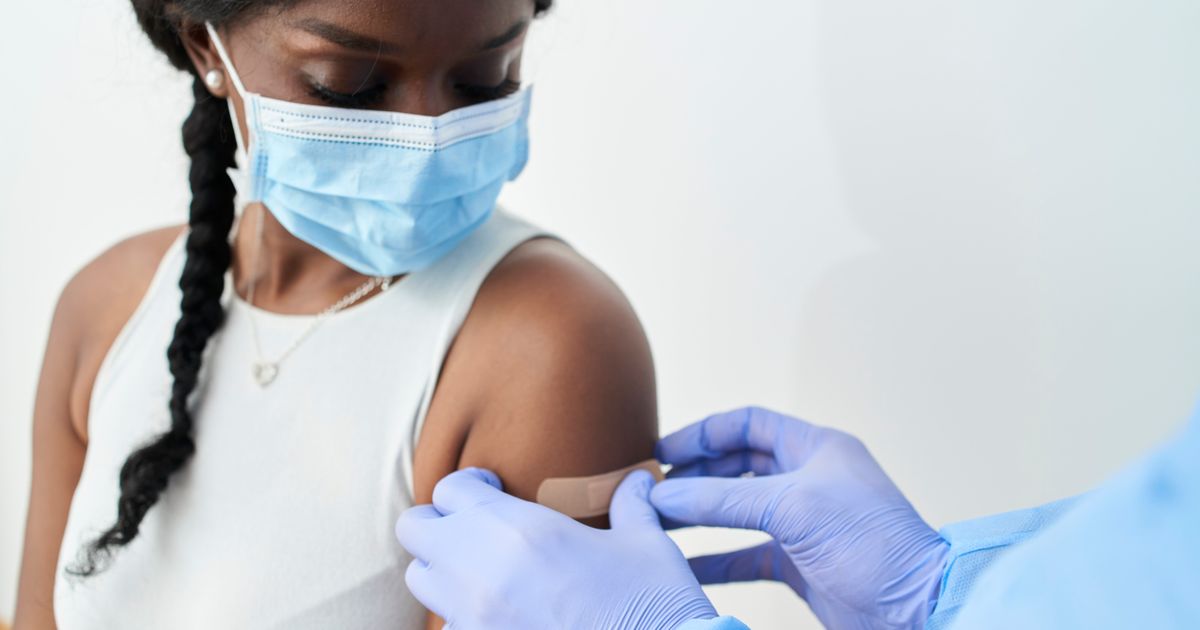It’s that time of year again: flu season. The exact timing varies, but generally, cases start to pick up in October with the peak of the season happening in December through February, according to the Centers for Disease Control and Prevention.
And once again, we not only have to deal with the flu circulating, but we are also still in the COVID-19 pandemic, which means there’s an increased risk for severe disease from both viruses as we move into the colder months. So, it’s doubly important that you make sure you’re up to date on your COVID vaccinations and your flu shot. Especially now that there’s a new bivalent COVID shot that protects against the highly-contagious omicron variant.
Can you check two things off your to-do list at once and get these shots on the same day? Here’s what you need to know about getting the new COVID booster and the flu shot at the same time.
“There is no danger in getting the new COVID booster and the flu shot at the same time. It is safe to get both shots in one visit,” said Dr. Andy Anderson, executive vice president and chief medical and quality officer at RWJBarnabas Health in New Jersey.
If you do decide to get your shots on the same day, it is recommended to get one shot in each arm, he added.
This is beneficial because you’ll be protected against both viruses sooner rather than later.
“By administering them at the same time, we are more likely to ensure that people are protected against both of these diseases,” said Dr. Laolu Fayanju, an Ohio-based family medicine specialist with Oak Street Health. “Both influenza and COVID are circulating.”
If you get both vaccines on the same day, you’ll be protected against severe disease and complications like hospitalization and death sooner, he noted. Keep in mind that it takes two weeks for both vaccines to fully kick in.
This is important for everyone, but it is particularly important for those at high-risk for severe disease, like older people, people with asthma and other conditions, who should be protected against both illnesses as soon as possible.
Plus, you’ll only have to deal with vaccine side effects once.
“When taken together, [the new COVID booster and flu shot] show similar reactogenicity, which means the body’s natural response to vaccines,” Fayanju said.
In other words, those vaccine side effects you likely know all about at this point (headache, fever, fatigue, achiness) are known to happen with both vaccines. If you get the shots on the same day, you’ll only have to deal with those side effects on one day as opposed to two.
Anderson added that “the CDC notes that the way that our bodies develop protection and possible side effects are generally similar whether vaccines are given alone or with other vaccines.”
This means your side effects likely won’t be any worse if you get both shots on the same day, Anderson said. That said, it is still possible to feel pretty crummy after vaccination. Make sure you hydrate, get your rest and are prepared to take it easy the next day in case you wake up feeling lousy.
Roos Koole via Getty Images
And it’ll save time.
Going to a doctor’s appointment isn’t normally the most exciting part of your day, and you likely have many other things to do, too. But if you can get both vaccines at the same appointment, you’ll only have to venture out to the doctor once, not twice, for these shots.
“If we can save our patients time and ensure they’re getting these vaccines at the same time… I think that’s to the patient’s advantage,” Fayanju said. And who doesn’t want to save some time when possible?
Check with your doctor about scheduling both shots.
While both experts say it’s OK to get your shots at the same time, you should still check with your doctor if you have any hesitations. There are some people who may not be eligible for both shots just yet.
For most people, the recommended timing for the flu shot is September or October, Anderson said, but the recommended timing for the new COVID booster depends on a few factors: First, folks who recently got their COVID booster or their initial vaccine should wait at least two months to get this new COVID shot. Additionally, people who just had COVID can wait up to three months to get this booster. Lastly, only those 18 and over can get the Moderna booster. The new Pfizer shot is authorized for those 12 and up.
If you fall into one of these categories, you shouldn’t delay your flu shot just to consolidate appointments. In this case, you’ll want to get protected against the flu first.
If you don’t fall into these categories, you’re free to get the new booster shot now.
Keep in mind that relaxed public health precautions could mean a more severe flu season.
When we were at the height of the pandemic, flu cases were low. This likely has to do with the public health measures — like masking and social distancing — that were in effect. Now that those precautions are gone in most scenarios, flu cases likely will also creep up.
Plus, Australia had a bad flu season this year, and “we can learn a lot from how our flu seasons here in the Northern Hemisphere will proceed based on what’s been going on in the Southern Hemisphere,” Fayanju said.
So, it would not be a surprise if we are faced with a tough flu season, too.
“Flu kills tens of thousands of people,” every year, Fayanju said. The flu shot is the best way you can protect yourself and your loved ones from getting the virus.
Beyond that, COVID has killed more than 1 million Americans so far and is continuing to infect people daily. Being protected against these contagious COVID strains and the flu can only benefit you this fall and winter.
Experts are still learning about COVID-19. The information in this story is what was known or available as of publication, but guidance can change as scientists discover more about the virus. Please check the Centers for Disease Control and Prevention for the most updated recommendations.


